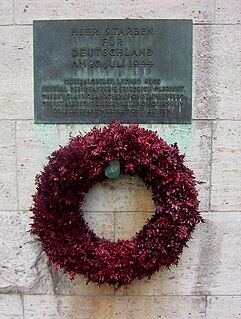 W
WGerman resistance to Nazism was the opposition by individuals and groups in Germany to the Nazi regime between 1933 and 1945. Some of these engaged in active resistance, including attempts to remove Adolf Hitler from power by assassination and overthrow his regime.
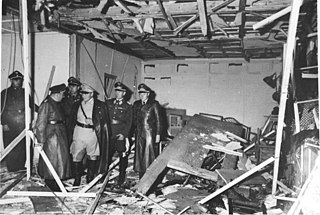 W
WOn 20 July 1944, Claus von Stauffenberg and other conspirators attempted to assassinate Adolf Hitler, Führer of Nazi Germany, inside his Wolf's Lair field headquarters near Rastenburg, East Prussia. The name Operation Valkyrie—originally referring to part of the conspiracy—has become associated with the entire event.
 W
WThe Barmen Declaration or the Theological Declaration of Barmen 1934 was a document adopted by Christians in Nazi Germany who opposed the Deutsche Christen. In the view of the delegates to the Synod that met in the city of Wuppertal-Barmen in May, 1934, the German Christians had corrupted church government by making it subservient to the state and had introduced Nazi ideology into the German Protestant churches that contradicted the Christian gospel.
 W
WThe Bendlerblock is a building complex in the Tiergarten district of Berlin, Germany, located on Stauffenbergstraße. Erected in 1914 as headquarters of several Imperial German Navy offices, it served the Ministry of the Reichswehr after World War I. Significantly enlarged under Nazi rule, it was used by several departments of the Oberkommando der Wehrmacht (OKW) from 1938, especially the Oberkommando des Heeres and the Abwehr intelligence agency.
 W
WAlbrecht Theodor Andreas Graf von Bernstorff was a German diplomat and member of the resistance to Nazi Germany.
 W
WMargarete Blank (1901–1945) was a German doctor who was executed for defeatist speech in 1945. There are now several memorials to her including street names in Engelsdorf and Panitzsch; old people's homes in Prenzlau and Thekla, Leipzig; schools in Panitzsch and Torgau; and an annual prize for a work of medical history at the Leipzig Medical School.
 W
WThe Buchenwald Resistance was a resistance group of prisoners at Buchenwald concentration camp. It involved Communists, Social Democrats, and people affiliated with other political parties, unaffiliated people, and both Jews and Christians. Because Buchenwald prisoners came from a number of countries, the Resistance was also international. Members tried to sabotage Nazi efforts where they could, worked to save the lives of child inmates, and in the last days of the camp, with many Nazis fleeing the approaching allied troops, tried to gain control of the camp itself. After liberation, the prisoners documented their experiences on paper and formed an international committee to look after the welfare of survivors.
 W
WLeo Drabent was a German peace campaigner and Communist activist.
 W
WGeorg Ferdinand Duckwitz was a German diplomat. During World War II he served as an attaché for Nazi Germany in occupied Denmark. He tipped off the Danes about the Germans' intended deportation of the Jewish population in 1943 and arranged for their reception in Sweden. Danish resistance groups subsequently rescued 95% of Denmark's Jewish population. Israel has designated Duckwitz as one of the Righteous Among the Nations.
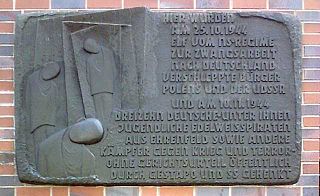 W
WThe Edelweiss Pirates were a loosely organized group of youth in Nazi Germany. They emerged in western Germany out of the German Youth Movement of the late 1930s in response to the strict regimentation of the Hitler Youth. Similar in many ways to the Leipzig Meuten, they consisted of young people, mainly between the ages of 14 and 17, who had evaded the Hitler Youth by leaving school and were also young enough to avoid military conscription, which was only compulsory from the age of 17 onward. The roots and background of the Edelweiss Pirates movement were detailed in the 2004 film Edelweiss Pirates, directed by Niko von Glasow.
 W
WThe Ehrenfeld Group was an anti-Nazi resistance group, active in the summer and autumn of 1944.
 W
WUrsula Goetze was a Berlin student who participated in political opposition to the Nazi government in Germany. In May 1942, following involvement in a leafleting campaign, she was arrested and, some time later, sentenced to death. She died by decapitation with a guillotine.
 W
WThe Iron Front was a German paramilitary organization in the Weimar Republic that consisted of social democrats, trade unionists, and liberals. Its main goal was to defend liberal democracy against totalitarian ideologies on the far right and left, and it chiefly opposed the Sturmabteilung wing of the Nazi Party and the Antifaschistische Aktion wing of the Communist Party of Germany.
 W
WWalter Janka was a German communist, political activist and writer who became a publisher.
 W
WHeinz Kamnitzer was a German writer and historian. He was part of the political-cultural establishment and a vocal government supporter in the German Democratic Republic.
 W
WIn late 1934 and early 1935, the United Australia Party Government of Joseph Lyons failed to exclude Egon Erwin Kisch, a member of the Communist Party of Germany, from entering Australia.
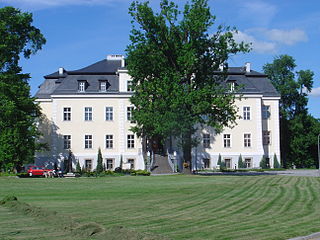 W
WThe Kreisau Circle (1940–1944) was a group of about twenty-five German dissidents led by Helmuth James von Moltke, who met at his estate in the rural town of Kreisau, Silesia. The circle was composed of men and a few women from a variety of backgrounds, including those of noble descent, devout Protestants and Catholics, professionals, socialists and conservatives. Despite their differences, the members of the Kreisau Circle found common interest in their opposition to Hitler's Nazi regime on both moral and religious grounds. At their meetings, the circle discussed how they would reorganize the German government after the end of the Third Reich.
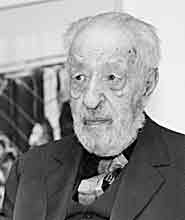 W
WJürgen Kuczynski was a German economist and communist. He worked with the US Army during the Second World War while in exile in England, and at the same time served as a spy for the Soviet Union, passing extensive information to them. After the war, he initially returned to Germany on assignment with the US Army. He settled in East Germany, part of the Soviet Union zone of influence, and became one of its leading intellectuals.
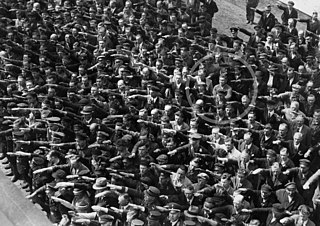 W
WAugust Landmesser was a worker at the Blohm+Voss shipyard in Hamburg, Germany. He is known as the possible identity of a man appearing in a 1936 photograph, conspicuously refusing to perform the Nazi salute with the other workers. Landmesser had run afoul of the Nazi Party over his unlawful relationship with Irma Eckler, a Jewish woman. Later, he was imprisoned and eventually, he was drafted into penal military service, where he was killed in action.
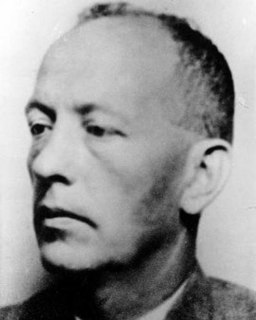 W
WFranz Leuninger was a German trade unionist, politician and resistant against the Nazis' rise to power and regime. Working as a bricklayer after school, he became a member of the trade union for construction workers early on, serving as its regional leader in Silesia in the 1920s. He was a member of the city council of Breslau for the Zentrumspartei from 1930, and ran for the German Reichstag in 1933, as a strong opponent of the Nazi party.
 W
WThe German Resistance Memorial Center is a memorial and museum in Berlin, capital of Germany. It was opened in 1980 in part of the Bendlerblock, a complex of offices in Stauffenbergstrasse, south of the Großer Tiergarten in Tiergarten. It was here that Colonel Claus Schenk Graf von Stauffenberg and other members of the failed 20 July plot that attempted to assassinate Adolf Hitler were executed.
 W
WMy Opposition is a diary secretly written by the German social democrat Friedrich Kellner (1885–1970) during World War II to describe life under Nazi Germany and to expose the propaganda and the crimes of the Nazi dictatorship. Comprising ten notebooks, it is considered by leading historians as "an important piece of historical literature." The editors of the German magazine Der Spiegel called it "an image of Nazi Germany that has never existed before in such a vivid, concise and challenging form." Kellner began his 861-page diary on September 1, 1939, and wrote his last entry on May 17, 1945. In 1968 he gave the diary to his American grandson, Robert Scott Kellner, to translate into English and to bring it to the attention of the public.
 W
WThe National Committee for a Free Germany was a German anti-Nazi organization that operated in the Soviet Union during World War II.
 W
WOperation Valkyrie was a German World War II emergency continuity of government operations plan issued to the Territorial Reserve Army of Germany to execute and implement in case of a general breakdown in civil order of the nation. Failure of the government to maintain control of civil affairs might have been caused by the Allied bombing of German cities, or uprising of the millions of foreign forced laborers working in German factories.
 W
W"Peat Bog Soldiers" is one of Europe's best-known protest songs. It exists in countless European languages and became a Republican anthem during the Spanish Civil War. It was a symbol of resistance during the Second World War and is popular with the Peace movement today. It was written, composed and first performed in a Nazi concentration camp by prisoners.
 W
WThe People's Court was a Sondergericht of Nazi Germany, set up outside the operations of the constitutional frame of law. Its headquarters were originally located in the former Prussian House of Lords in Berlin, later moved to the former Königsberg Wilhelmsgymnasium at Bellevuestrasse 15 in Potsdamer Platz.
Plotting Hitler's Death: The German Resistance To Hitler, 1933–1945 is a 1994 book by the historian Joachim Fest about the Germans, both civilian and military, who plotted to kill Adolf Hitler from 1933 onwards. It was written to mark the 50th anniversary of the 20 July plot to kill Hitler and translated into English in 1996. The book includes detailed accounts of various plots and explores the reasons the Allies and many within Germany gave little support to the resistance to Hitler. Among those treated extensively in the book are Colonel Henning von Tresckow and, later, Lieutenant Colonel Claus Schenk Graf von Stauffenberg.
 W
WOttilie Pohl was a German socialist politician and activist who participated in the German resistance to Nazism. She was born in Schönwald into a Jewish family. She worked as milliner and moved to Berlin. She married Wilhelm Pohl in 1893, they had two children; he died in 1915.
 W
WThe Prussian Union of Churches was a major Protestant church body which emerged in 1817 from a series of decrees by Frederick William III of Prussia that united both Lutheran and Reformed denominations in Prussia. Although not the first of its kind, the Prussian Union was the first to occur in a major German state.
 W
WThe Red Orchestra, as it was known in Germany, was the name given by the Abwehr Section III.F to anti-Nazi resistance workers in August 1941. It primarily referred to a loose network of resistance groups, connected through personal contacts, uniting hundreds of opponents of the Nazi regime. These included groups of friends whose held discussions that were centred around Harro Schulze-Boysen and Arvid Harnack in Berlin, alongside many others. They printed and distributed illegal leaflets, posters, and stickers hoping to incite civil disobedience; helped Jews and opposition escape the regime; documented the crimes of the Nazi regime; and forwarded military intelligence to the Allies. Contrary to legend, the Red Orchestra was neither directed by Soviet communists nor under a single leadership but a network of groups and individuals, often operating independently. To date, about 400 members are known by name.
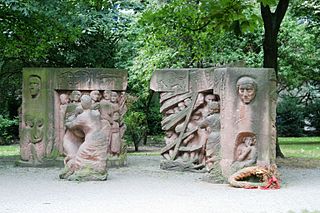 W
WThe Rosenstrasse protest protest on Rosenstraße in Berlin took place during February and March 1943. This demonstration was initiated and sustained by the non-Jewish wives and relatives of Jewish men and mischling who had been arrested and targeted for deportation, based on the racial policy of Nazi Germany. The protests continued until the men being held were released. The Rosenstrasse protest is considered to be a significant event as it is the only mass public demonstration by Germans in the Third Reich against the deportation of Jews. In describing the protests, German Foreign Minister Joschka Fischer states, "There were demonstrations, public protests against random arrests, - first dozens, then hundreds, then thousands of women, who demanded in unison "Give us back our men!" This lasted a whole week, in icy weather, in the middle of Berlin in 1943. Finally the protest by the women of the Rosenstrasse, furiously desperate and undeterred by any threats, made the Nazi regime retreat. 1700 Berlin Jews, whom the Gestapo in their so-called "final action" had herded together into the Jewish community house on Rosenstrasse near Alexanderplatz, were freed".
 W
WThe Roter Frontkämpferbund, usually called Rotfrontkämpferbund, abbreviated RFB, was a far left paramilitary organization affiliated with the Communist Party of Germany (KPD) during the Weimar Republic. It was officially a non-partisan and legally registered association. The organisation was banned as extremist by the governing Social Democrats in 1929.
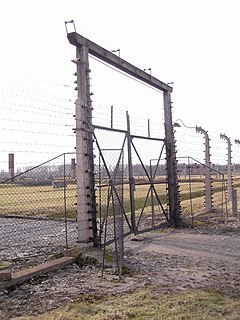 W
WOn the night of 5 April 1944, Siegfried Lederer, a Czech Jew, escaped from the Auschwitz concentration camp wearing an SS uniform provided by SS-Rottenführer Viktor Pestek. Because of his Catholic faith and infatuation with Renée Neumann, a Jewish prisoner, Pestek opposed the Holocaust. He accompanied Lederer out of the camp, and the two men traveled together to the Protectorate of Bohemia and Moravia to obtain false documents for Neumann and her mother.
 W
WA Sondergericht was a German "special court". After taking power in 1933, the Nazis quickly moved to remove internal opposition to the Nazi regime in Germany. The legal system became one of many tools for this aim and the Nazis gradually supplanted the normal justice system with political courts with wide-ranging powers. The function of the special courts was to intimidate the German public, but as they expanded their scope and took over roles previously done by ordinary courts such as Amtsgerichte this function became diluted.
 W
WAntonie Stemmler was a German teacher, nurse and member of the fascist resistance. In 1967 she received the Florence Nightingale Medal to honor her work in Nazi concentration camps during World War II and her nursing activities during the Spanish Civil War. In later life she was the only woman ever to chair the Zauch-Belziger District Council and when administrative reform dissolved the council, she became the first chair of the Council of the District of Potsdam. She received both the Clara Zetkin Medal and the Patriotic Order of Merit from East Germany.
 W
WThe White Rose was a non-violent, intellectual resistance group in the Third Reich led by a group of students including Hans and Sophie Scholl. They attended the University of Munich. The group conducted an anonymous leaflet and graffiti campaign that called for active opposition to the Nazi regime. Their activities started in Munich on 27 June 1942, and ended with the arrest of the core group by the Gestapo on 18 February 1943. They, as well as other members and supporters of the group who carried on distributing the pamphlets, faced show trials by the Nazi People's Court (Volksgerichtshof), and many of them were sentenced to death or imprisonment.
 W
WAugust Winnig was a German politician, essayist and trade unionist.
 W
W W
W